Making a tender, juicy and succulent smoked leg of lamb is surprisingly simple. Marinating overnight in an aromatic dry rub infuses your roast with flavor, and adds depth and complexity. This is an easy recipe to make a perfectly luscious smoked lamb leg every time. Whether you’re looking to make a special holiday roast to feed a crowd or make a Traeger smoked leg of lamb for a weekend dinner at home, this recipe is sure to impress.
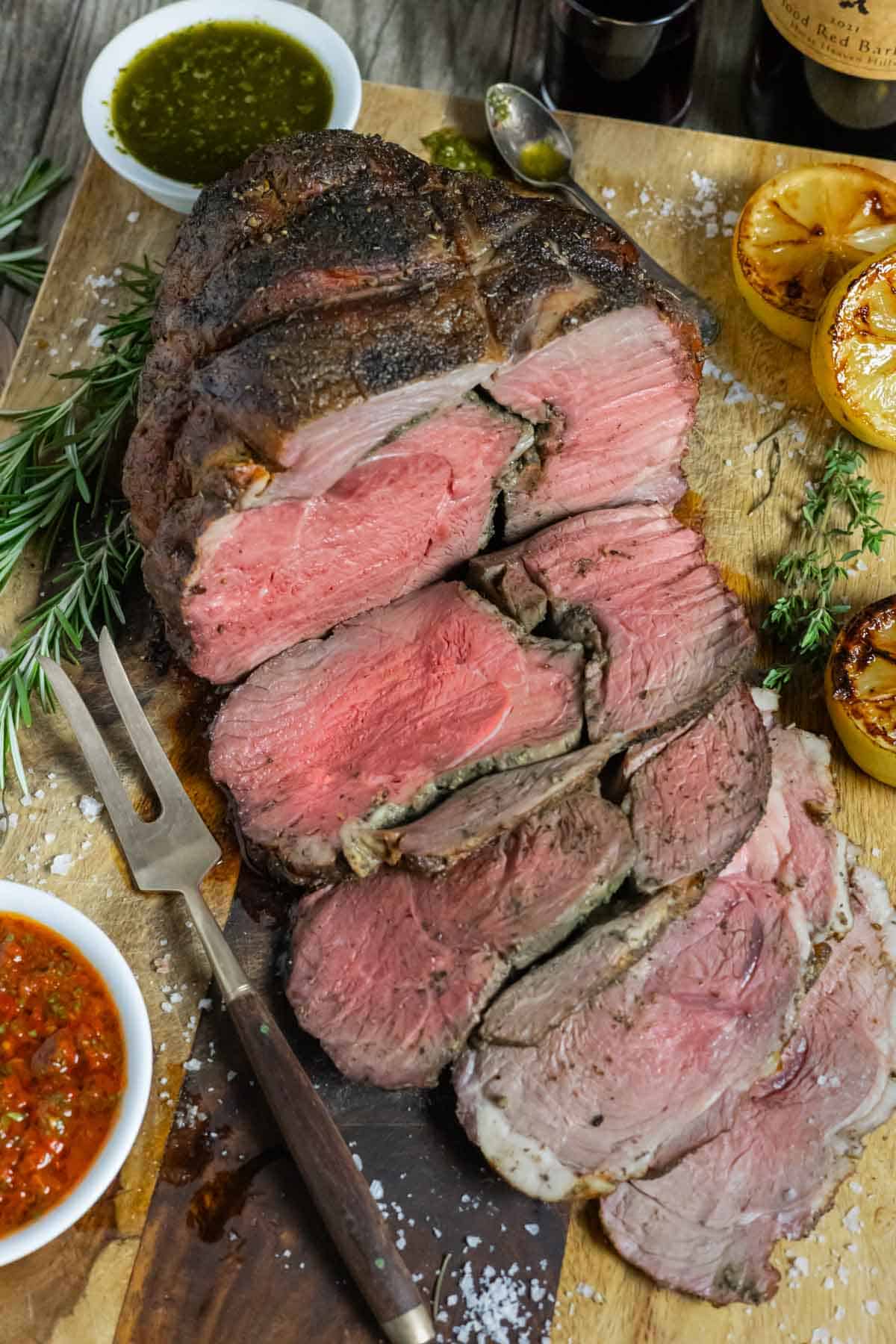
Jump to:
A smoked boneless leg of lamb is an elegant roast and makes a stunning dinner table centerpiece. And, it’s one of the easiest smoker recipes, as well. The initial preparation is very similar to Smoked Beef Ribs. Apply mustard and a dry rub, then the smoker does the rest. Serve with a slightly spicy Horseradish Mustard Sauce - it's truly a mouthwatering culinary experience.
Make this your special Easter lamb recipe, your Christmas dinner roast, or serve for any holiday gathering or summer barbecue.
Why you'll love this recipe
- Tender and juicy – the smoker creates a beautiful crust on the outside and it stays so tender on the inside
- Flavor-packed masterpiece – the combination of complex flavors create a symphony in your mouth
- Easy prep – a simple lamb roast is transformed using only mustard and a dry rub
- Special diet friendly – lamb is compliant with many special diets. This is an easy keto lamb recipe, is paleo, FODMAP-friendly, and is AIP and Whole30 compliant.
What does lamb taste like?
There are plenty of folks that have never tried lamb before. Lamb flavor is distinctly unique and tends to be slightly gamey and robustly rich, compared to other meats.
The breed, the region where they are raised, their diet and age all affect the flavor of the meat. Young ‘spring lamb’ tends to have a more subtle taste when compared to older lambs, where the flavor is more pronounced.
The cut selected also affects the taste of lamb. Fat tends to contribute to a more intense gaminess in the meat. For example, leg tends to have a milder flavor than fattier cuts, such as shoulder.
If you haven’t tried it, smoking lamb is a great way to explore the taste. Cooking method and preparation greatly influences the flavor profile. It lends itself perfectly to smoking and a Traeger leg of lamb, smoked low and slow is truly a thing of beauty.
Bone-in vs. boneless leg of lamb
I used a boneless leg, but you can also use a smoked bone-in leg of lamb. Smoking a boneless cut will take less time.
Boneless roasts are typically easier to find. They are often sold in netting that I recommend removing. I choose to remove the netting to score the fat cap and spread seasonings deep into the meat. And, I can open up the leg to expose the inside where the bone was removed and season that too - spicing up every nook and crany with mustard and aromatic spices. Once seasoned, tie the roast with butcher's twine and refrigerate overnight so the spices marinate and penetrate into the meat.
A boneless leg weighs less, making it easier to maneuver and is easier to carve than bone-in.
Smoking a bone-in leg is prepared the same way. The mustard and lamb spice rub will simply be applied to the outside and marinated for the same amount of time. However, it will take a bit more time on the smoker to reach your desired temperature.
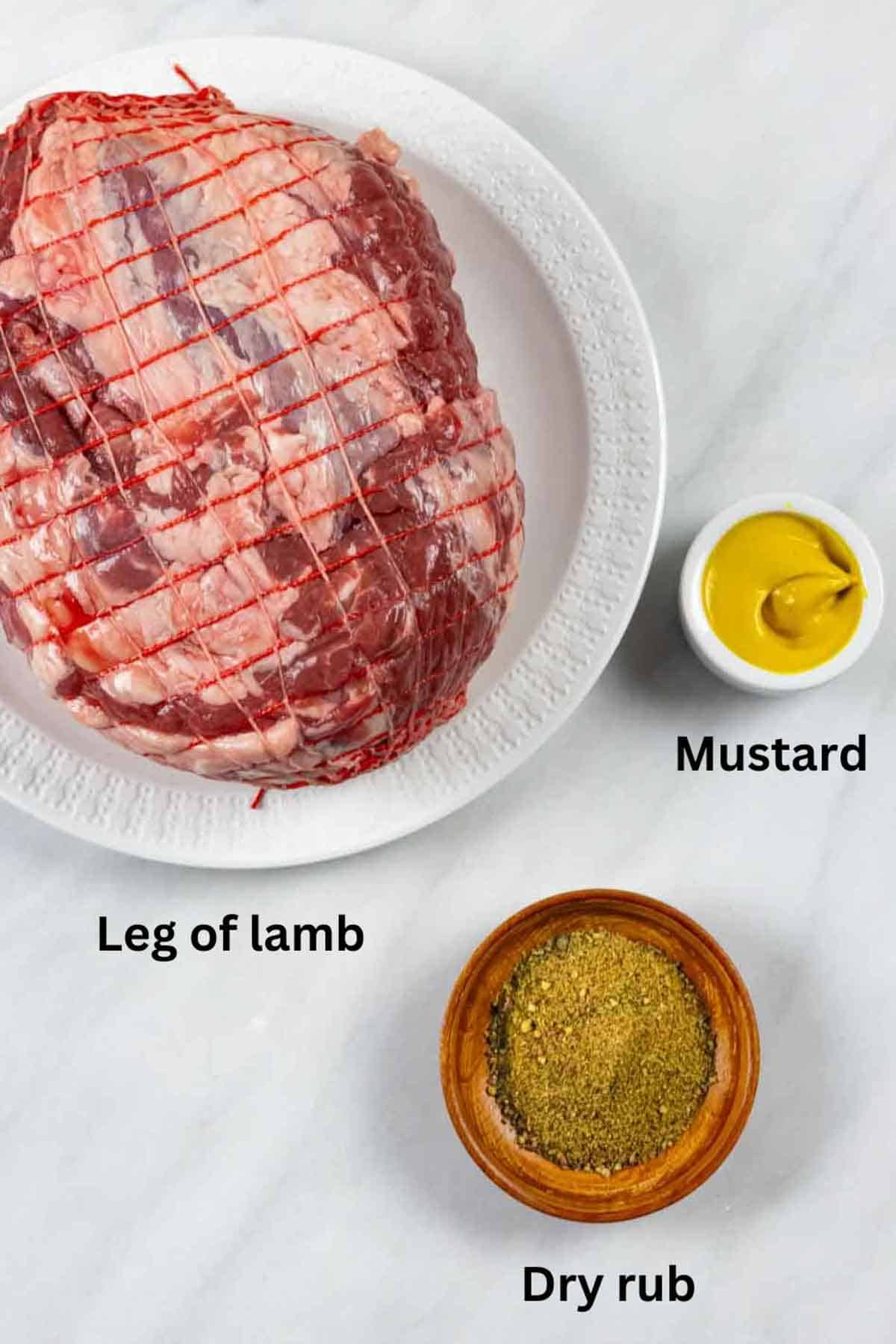
Ingredients
- Lamb leg – boneless or bone-in. I prefer boneless and use it for this recipe.
- Mustard – simple yellow mustard is fine. It helps the lamb rub to adhere to the surface and mellows the gaminess of the meat.
- Dry rub – I use this all-purpose seasoning that includes rosemary, sage, oregano, basil, salt, pepper and dried porcini mushrooms (which are optional). You can also try this savory Coffee Rub Recipe for a deep, rich flavor, or homemade Mediterranean Seasoning, featuring traditional, aromatic Greek spices. These rubs don't contain much salt, so I recommend adding ½ teaspoon per pound of meat. It helps to tenderize the meat and allows the spices to penetrate.
How much lamb per person?
Selecting the best roast size will depend on a few factors:
- How many people will you be serving?
- Will you be serving children?
- Do you want leftovers (which is always a ‘yes’!)?
A bone-in lamb weighs about 2 pounds more than boneless with the same amount of meat. When purchasing a raw roast, figure about 1 pound per adult, and ½ pound per child when determining what size roast to purchase.
How long to smoke a leg of lamb
Smoking time varies based on the size of the leg, temperature, level of doneness and fat content, to name a few variables.
A 4-7 pound boneless lamb leg will take approximately 2-4 hours at 250°F to reach medium-doneness. As a general rule, assume about 30 minutes per pound of smoking time. However, it's best to use internal temperature to determine whether your meat is done. Be sure to always temp with a meat thermometer to monitor internal temperature while it’s smoking. Using a smart thermometer is also a great idea, because you can keep track of internal temperature in real time using an app. Two of the best rated smart thermometers are the Meater Plus and the ThermoPro TempSpike, both available on Amazon.
Doneness levels for lamb
The temperatures for doneness are about the same as for beef. I recommend removing the leg from the smoker when it reaches 130°F. It will continue to rise in temperature (see Carryover Cooking FAQ) while resting, reaching a perfect medium-rare to medium doneness. Keep in mind that the thinner ends will reach a higher level of doneness than the thicker part of the leg.
Here are general guidelines based on internal temperature:
- Rare – the outside is seared with a cool red center. Temperature is about 125°F
- Medium rare – the center is warmer red and temperature is about 135°F
- Medium – the center is a warm pink and temperature is about 145°F
- Medium well – has a slightly pink center and temperature is about 155°F
- Well done – has no pink and temperature is about 165°F
Instructions
Smoking a leg of lamb is a very simple process - the smoker does most of the work!
Remove any netting on the roast before seasoning.
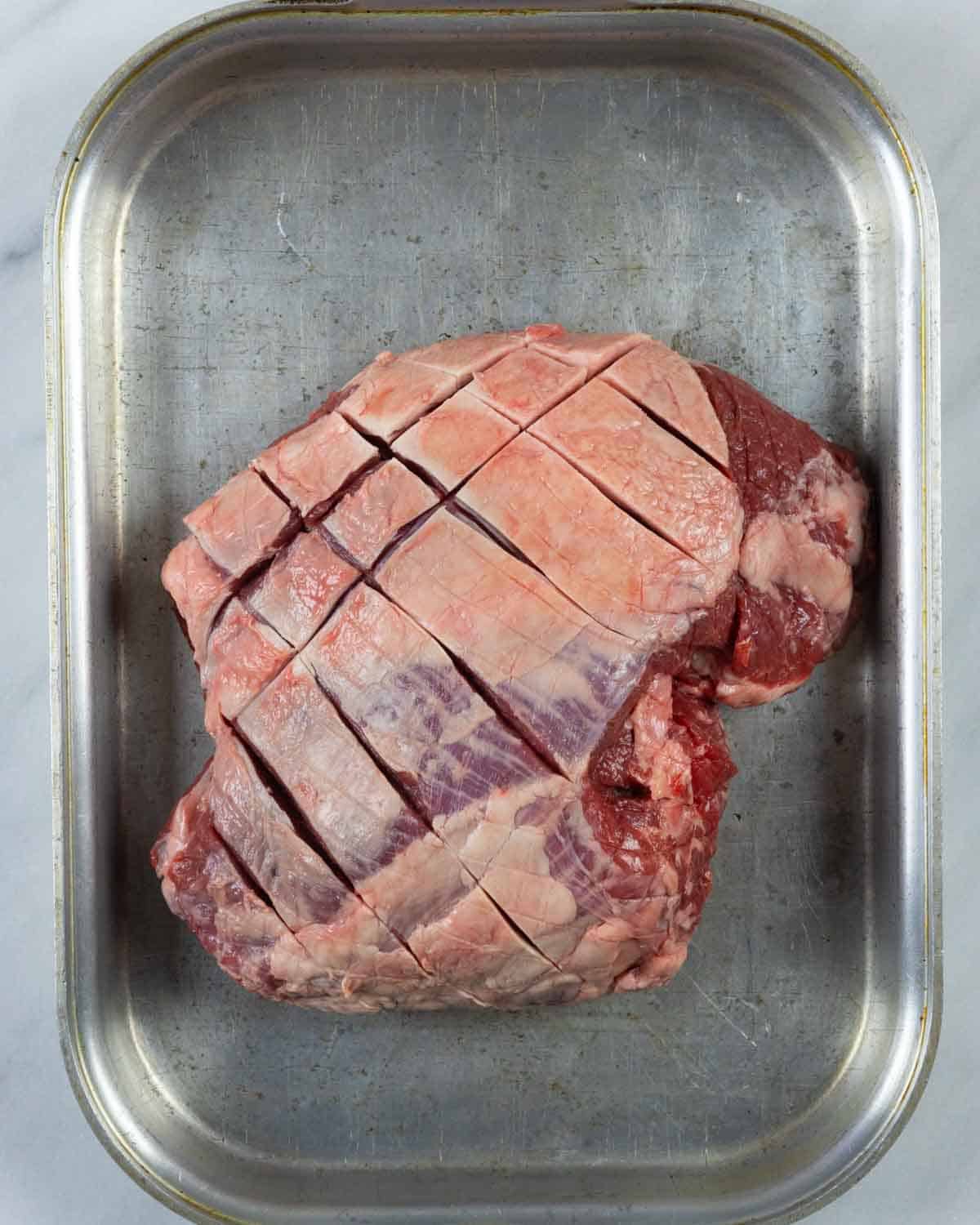
Score the fat cap with a knife. This allows more flavor to penetrate to the meat.
Note: You can also choose to trim the fat off of the leg if you wish. This can decrease some of the gamey flavor, but I like to keep it on. The fat keeps the meat more tender and juicy.

Rub the entire surface with mustard, making sure to get mustard into all the surface scoring.

Turn the leg over and coat the inside with mustard.
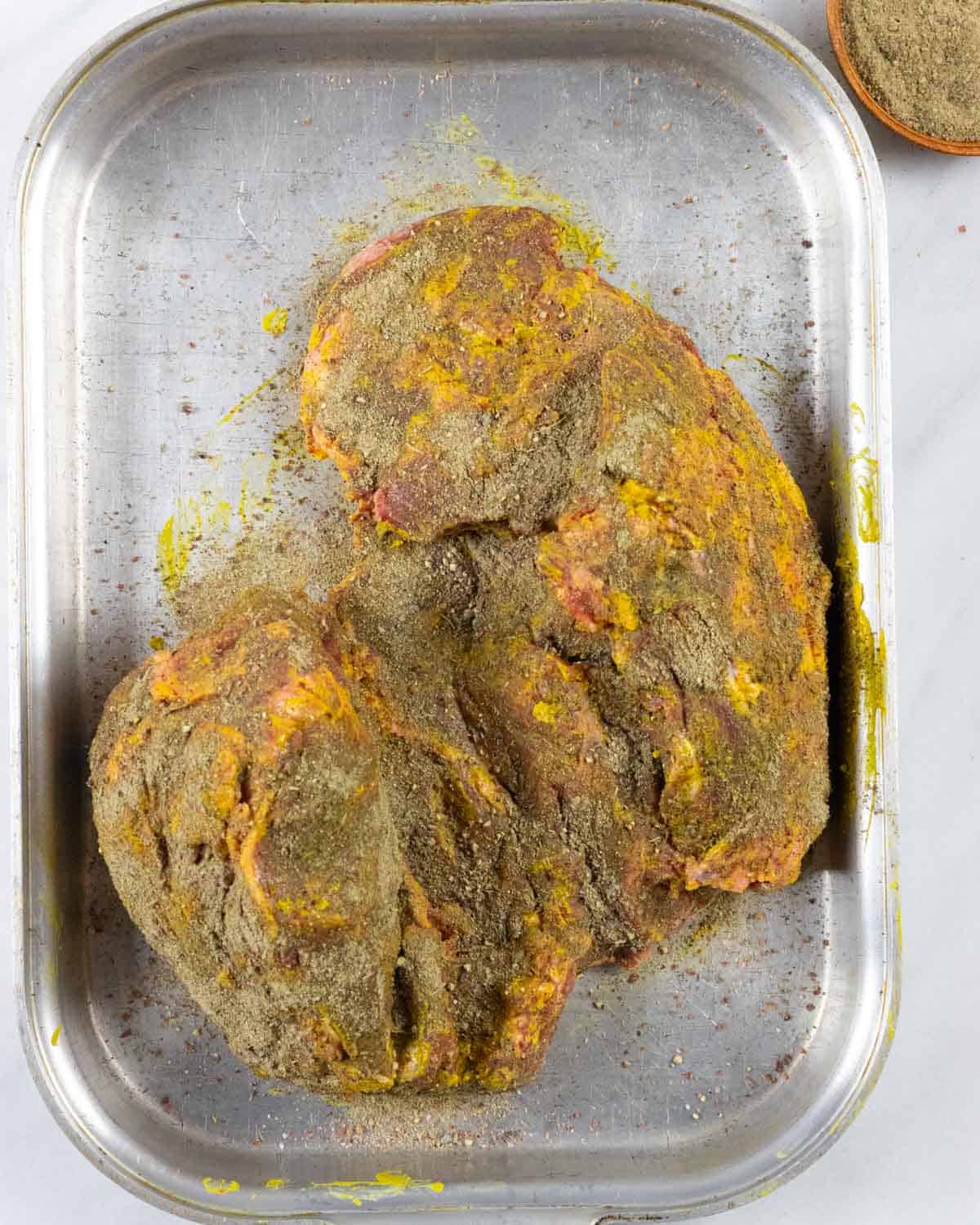
Generously sprinkle with the rub, making sure to get it into every nook and cranny.
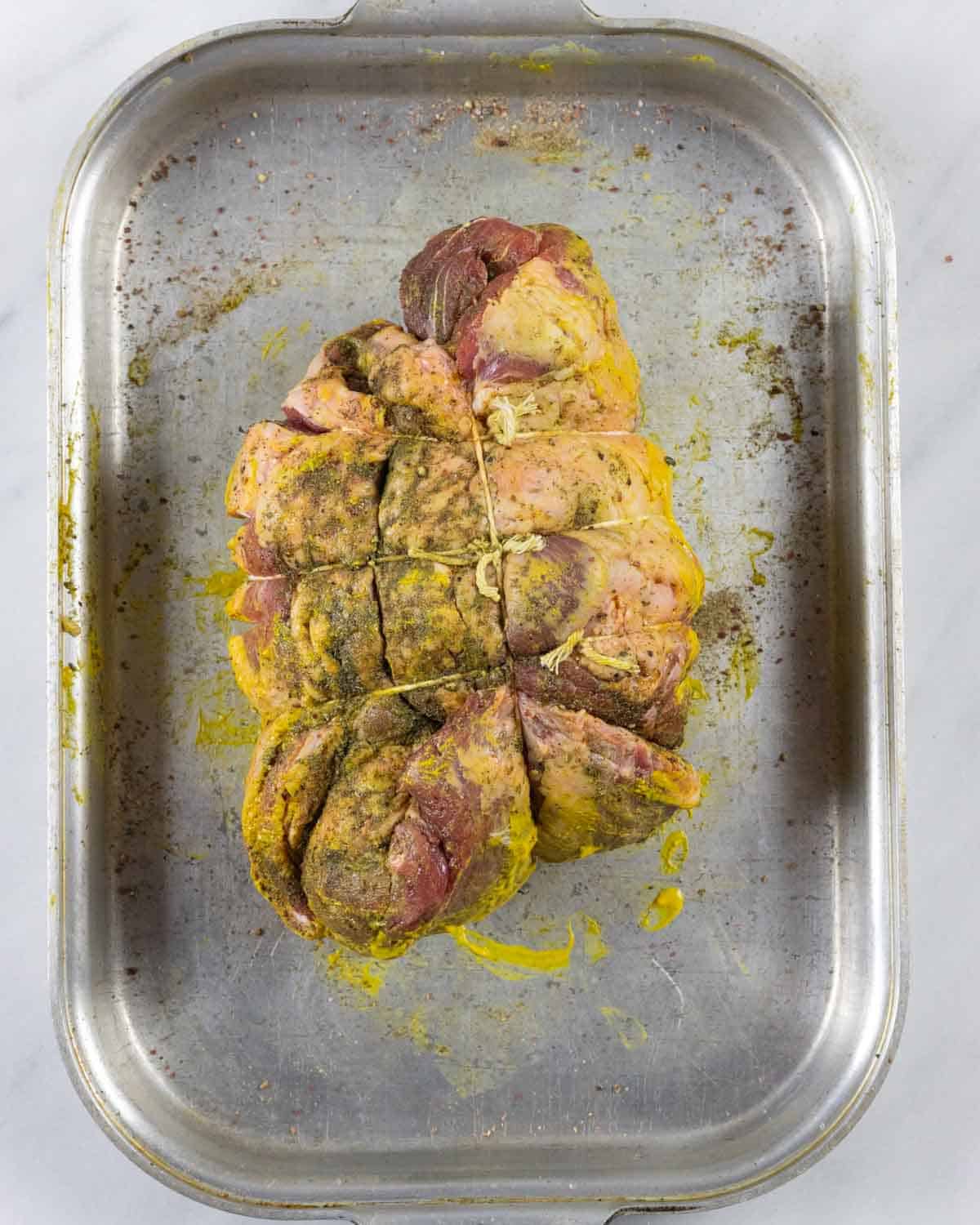
Fold together and tie firmly with butchers twine. The goal is to tie it so there are no loose flaps of meat, this promotes even cooking.
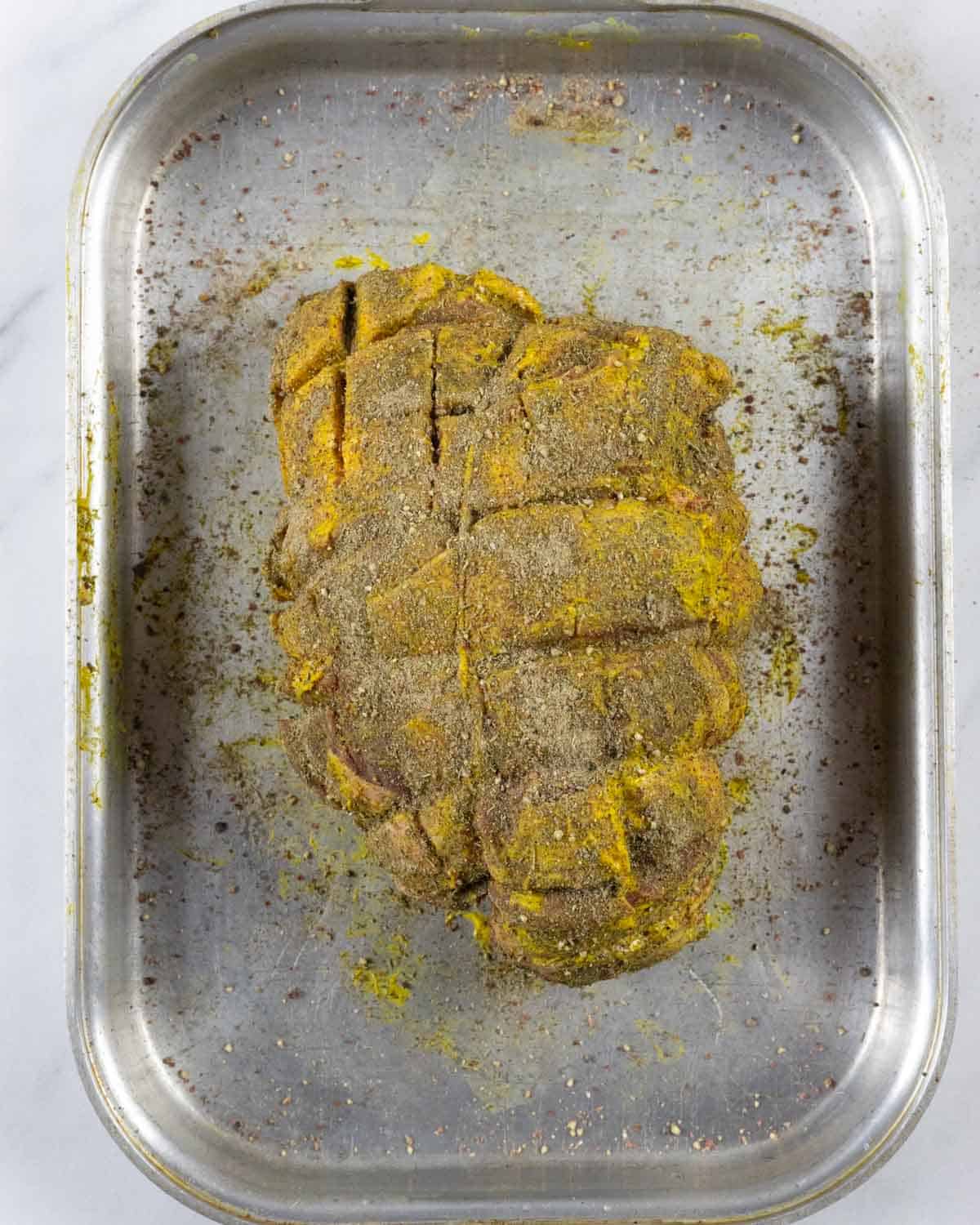
Sprinkle the surface with dry rub and place in refrigerator to marinate overnight or for at least 12 hours.
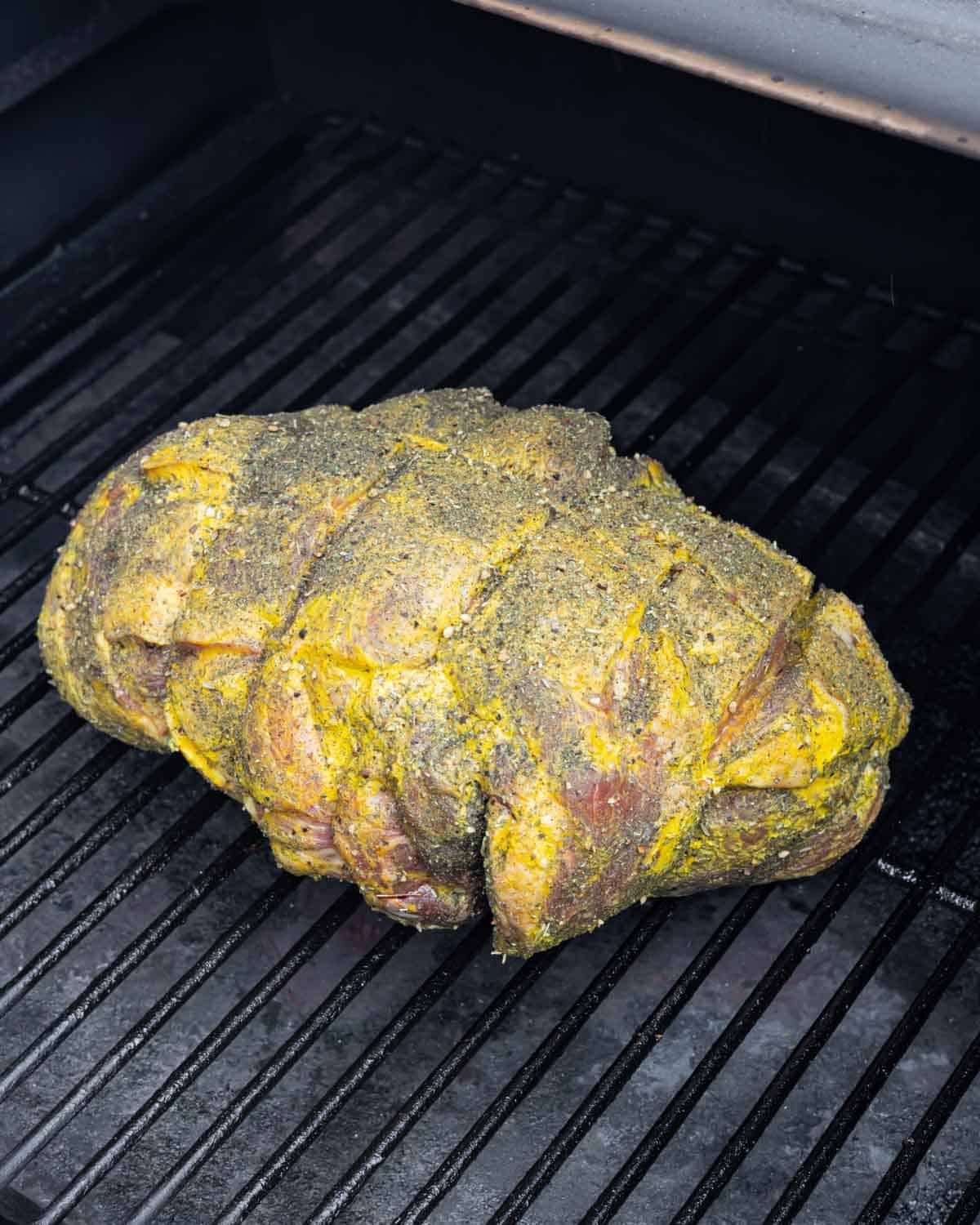
- Pre-heat the smoker to 250°F
- Remove the roast from the refrigerator while pre-heating the smoker
- Place the leg in the center of the grill with the fat cap facing up once the smoker reaches temp

Smoke until it reaches your desired level of doneness. I recommend taking it off at 130°F internal temperature, and carry-over cooking (See FAQ) during resting will bring the temperature up to medium-rare to medium.
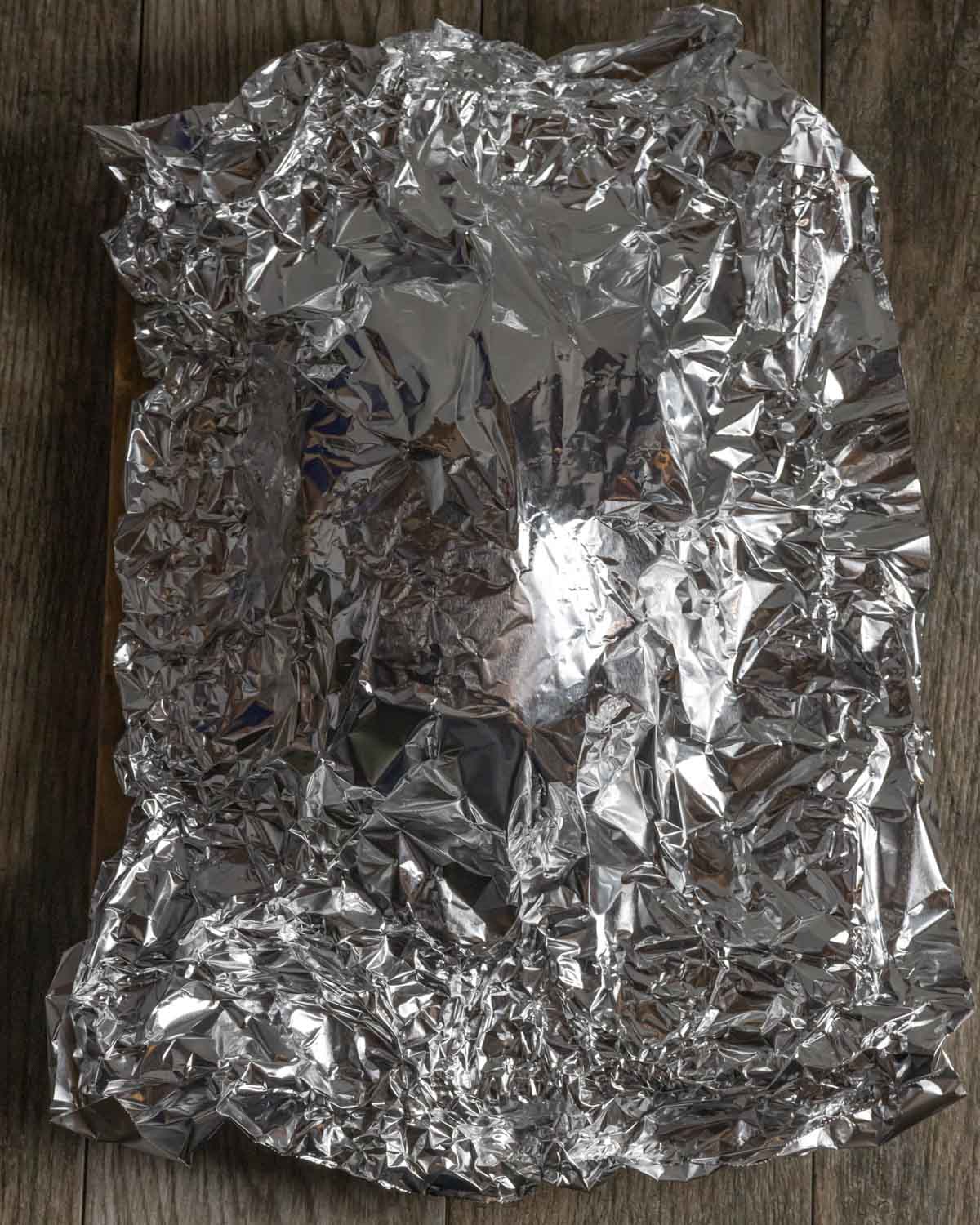
Remove from the grill, place on a platter and cover with foil to rest for 15-20 minutes.
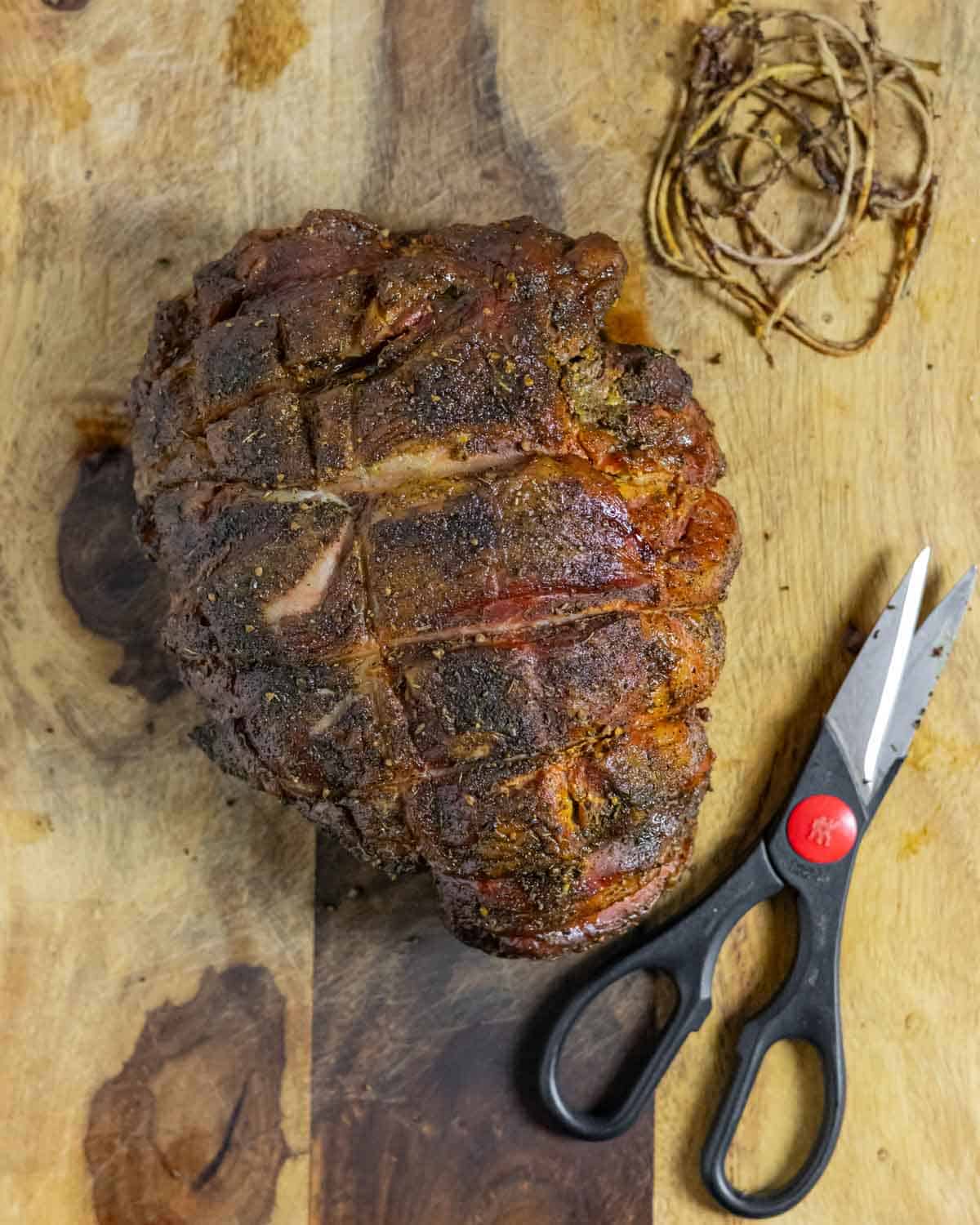
Cut away the twine, slice against the grain and serve.
TIP: Start with a fully thawed roast for best results. Partially thawed will result in overcooked lamb on the outside and undercooked on the inside.
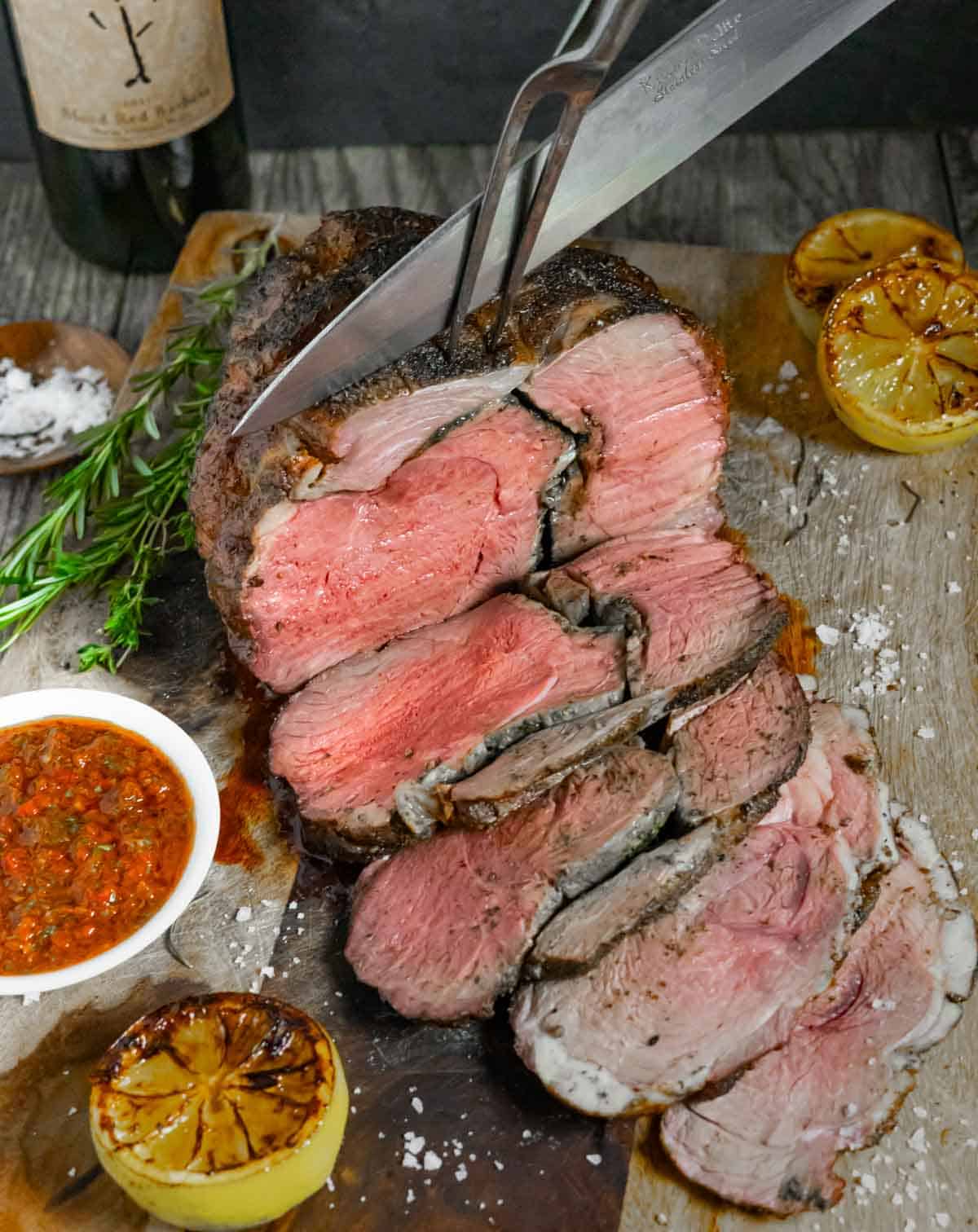
How to serve
Slice against the grain for best results. Slicing with the grain can cause the meat to fall apart and it will be difficult to cut.
- Top with some Red Chimichurri or Green Chimichurri Sauce – smoked lamb was meant for the savory flavors of chimichurri
- Horseradish Mustard Sauce – a hint of heat from the horseradish is a perfect match for the richness of lamb
- Pineapple Habanero Sauce – the sweetness and acidity of the pineapple and heat from the peppers is magical with rich meats and smoky undertones
Wine pairings with lamb
There are many classic varietals that pair well with lamb. Most people focus on reds, but white wines can also work well with rich, red meats.
Pinot Noir – especially good if the meat is served on the rarer side. You don't want a rich wine to overpower the subtle texture and flavor. I'm in love with Four Graces Pinot Noir from Dundee, OR.
Syrah or Shiraz – perfect for meats cooked to medium-doneness where they're not quite as tender as a rare roast and can stand up to a full-bodied wine. The robust tannins can enhance the tenderness of the meat. I adore the Syrah from Stoller Vineyards.
Barbera – full-bodied and rich, this is what you want to have with medium to well done meats. The Blood Red Barbera from Cascade Cliffs is the be-all-end-all of Barberas, in my opinion.
Rosé – try a weighty rosé to go with tender, pink lamb. It's perfect for a spring or summer meal when a red seems a bit too heavy. Côtes de Provence rosé has a subtle smokiness with hints of cherry and spice - perfect for rich, complex meats.
Chardonnay – an oakey, buttery Chardonnay goes incredibly well with grilled and smoked meats. La Crema Chardonnay is widely available and is well-balanced with notes of green apple, toasted oak and butter.
How to store
Store in an airtight container or in a sealed bag in the refrigerator for up to 4 days or consider freezing.
FAQ
Carryover cooking means that your food is still cooking after you remove it from the heat source. While meat is resting, the outer layer is cooling, but the internal temperature is continuing to rise, which is referred to as latent heat.
When meat comes off the heat source, the outer layer is considerably hotter than the interior. Resting allows the outer layer to cool, while the internal temp rises a bit, usually between 5-10 degrees, depending on the cut. When the outer temperature and inner temperature are the same, your meat is considered to be fully rested and ready to slice.
Yes, as it’s a protein, it doesn’t contain any carbohydrates than can lead to intestinal discomfort. It’s a perfect addition to a low-carb low-FODMAP lifestyle when prepared with low-FODMAP seasonings, like this recipe.
Yes, the strong scent and flavor is considered by most people to be ‘gamey’ in nature. There are many factors that contribute to the unique, distinctive gamey flavor. Diet and age of the animal have a significant influence. The type of grass and grains determine a sweeter vs. gamey flavor in the meat. The distinctive flavor that makes lamb taste like it does is due to high concentrations of branched-chain fatty acids that are present in the meat, but are mostly contained in the fat. These fatty acids have a low odor threshold that makes them detectable to humans even in very small concentrations.
Yes, there are a few differences between the two aside from them being different breeds.
New Zealand lambs are usually smaller and have a more gamey flavor. They also are leaner, with less fat.
American lamb (domestic lamb) are larger and have a less gamey flavor. Raised eating grass, then finished on a mix of grains. However, you can get extremely high quality, entirely grass-fed American lamb from small local farms, such as Anderson Ranch, here in Oregon.
The robust, rich flavor of lamb pairs well with a variety of seasonings and spices, usually the more aromatic, the better. The flavors vary by region and culture, but all contribute a deep flavor to the meat. In addition to salt and pepper, rosemary, thyme, mint, basil, oregano and garlic are excellent choices. Also consider Eastern and North African spice combinations such as Tikka Masala, Harissa and Ras El Hanout in addition to individual spices such as cumin, cinnamon, clove, chili and coriander.
Sides for lamb
Great side dishes to serve with this recipe:
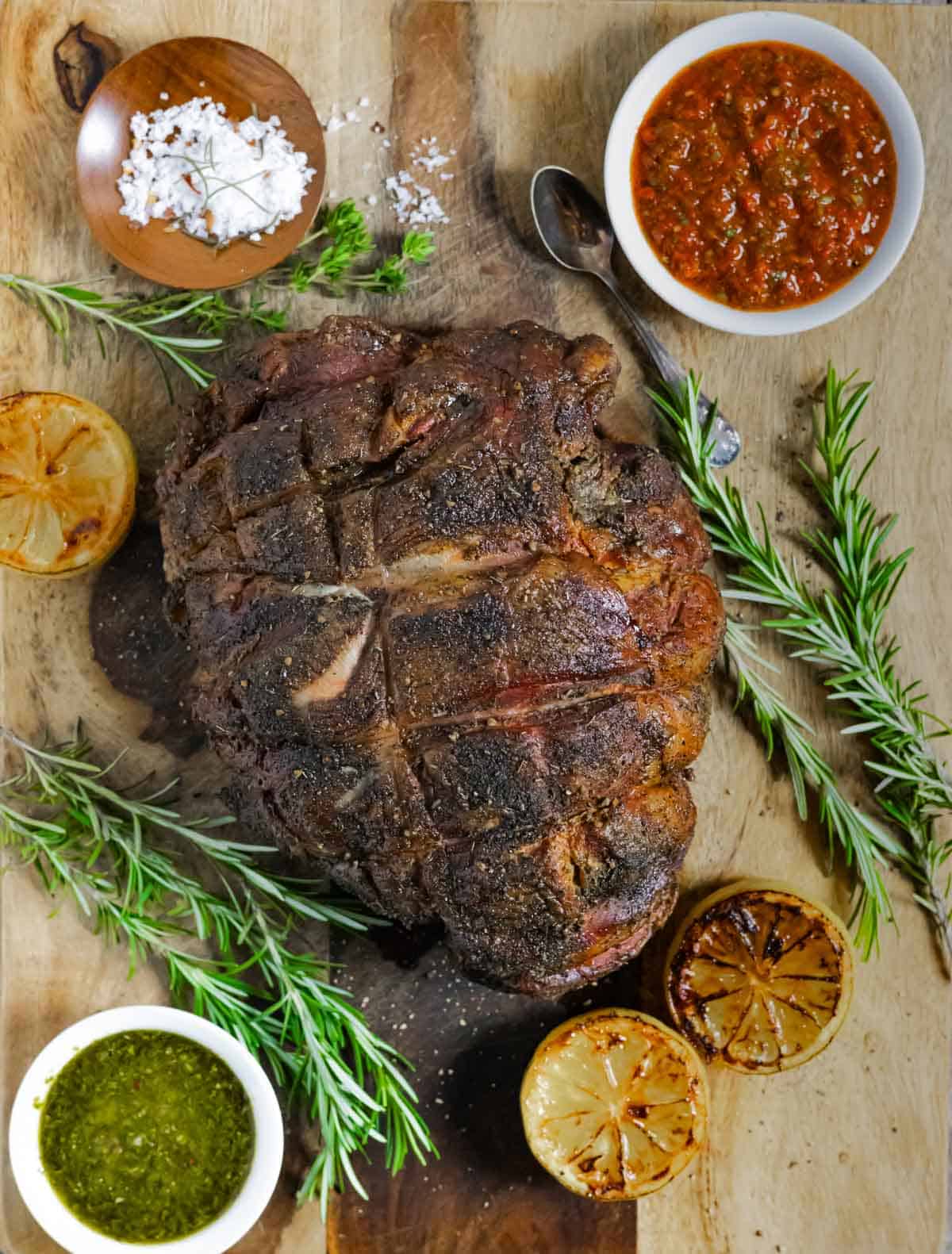
Did you make this recipe? Let me know how you liked it by giving a star rating and leaving a comment!
📖 Recipe
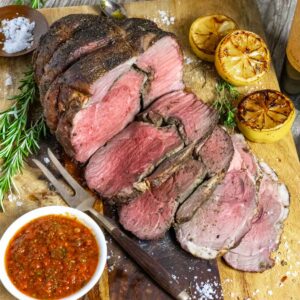
Smoked Leg of Lamb
Ingredients
- 1 leg of lamb (typically 4-7 pounds)
- ¼ cup yellow mustard
- ¼ cup dry rub (try this all-purpose seasoning. See Notes for optional herbs and spices.)
Instructions
Prepare the roast
- If the roast is wrapped in netting, remove it before seasoning.
- Score the fat cap with a knife. This allows more flavor to penetrate to the meat.Note: You can also choose to trim the fat off of the leg if you wish. This can decrease some of the gamey flavor, but I suggest leaving it on. The fat keeps the meat more tender and juicy.
- Rub the entire inner and outer surface with mustard.
- Generously sprinkle the inner surface with dry rub, making sure to get it into every nook and cranny.
- Fold the leg back together and tie firmly with butcher's twine.
- Sprinkle the outside generously with dry rub and refrigerate for 12 hours or overnight.
Smoking Leg of Lamb
- Pre-heat your smoker to 250℉.
- Remove the roast from the refrigerator while smoker is pre-heating.
- Once the smoker reaches temperature, place the leg in the center of the grill (fat side up) and smoke until it reaches your desired level of doneness. I recommend taking it off at internal temperature of 130℉, and carry-over cooking during resting (See FAQ) will bring internal temp up to medium-rare to medium. A 4-7 pound leg will take between 2-4 hours. See post for Levels of Doneness for Lamb and How Long to Smoke Lamb.
- Remove from the grill, place on a platter and cover with foil to rest for 15-20 minutes.
- Cut away the twine, slice against the grain and serve.
Notes
Optional herbs and spices
Use your favorite dry rub, this amazing homemade all-purpose seasoning, or try a variety of flavors that contribute a deep flavor to the meat. In addition to salt and pepper, rosemary, thyme, mint, basil, oregano and garlic are excellent choices. You'll find a combination of these spices in my Mediterranean Seasoning recipe. Also consider Eastern and North African spice combinations such as Tikka Masala, Harissa, and Ras El Hanout. TIP: When using spice blends, be sure there is enough salt added. Salt helps to soften the meat and let the flavors of spices penetrate. I recommend ½ teaspoon of salt per pound of meat.How to serve
Slice against the grain for best results. Slicing with the grain can cause the meat to fall apart and it will be difficult to cut.- Top with Red Chimichurri or Mexican Green Chimichurri Sauce – smoked lamb was meant for chimichurri
- Horseradish Mustard Sauce – a hint of heat from the horseradish is a perfect match for the richness of lamb
- Pinapple Habanero Sauce – the sweetness and acidity of the pineapple and heat from the peppers is magical with rich meats and smoky undertones
How to store
Store in an airtight container or in a sealed bag in the refrigerator for up to 4 days or consider freezing.Nutrition
*Net carbs = carbohydrates - fiber
Nutritional information is an estimate, calculated using online tools and does not include optional ingredients unless otherwise indicated.

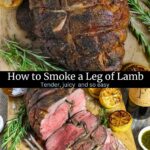

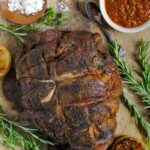
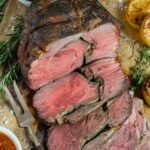
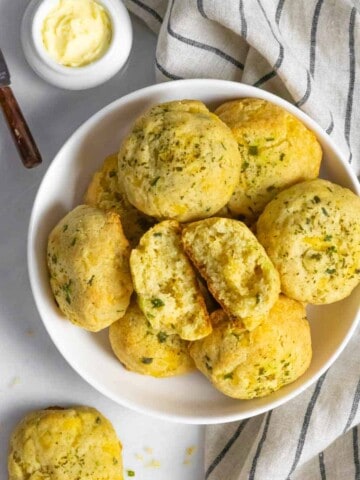
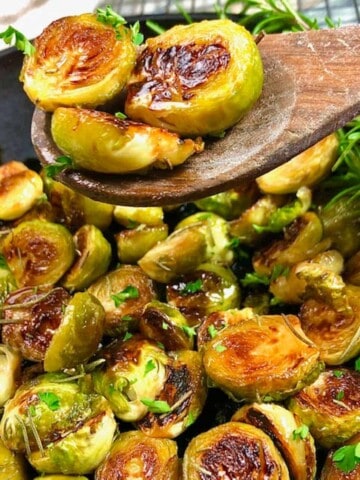
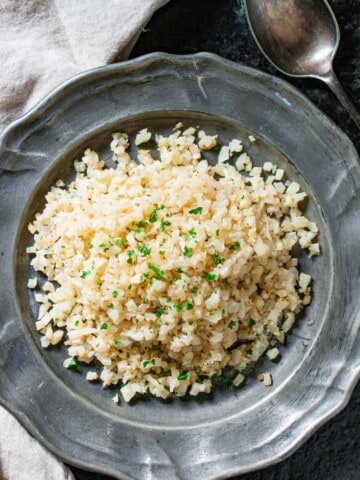
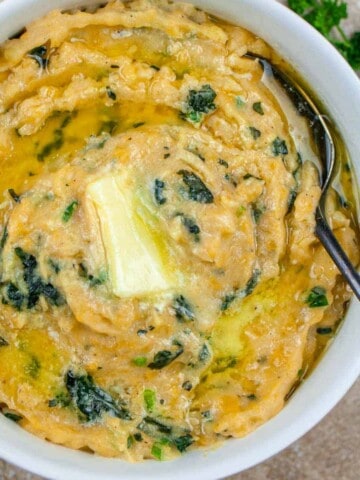
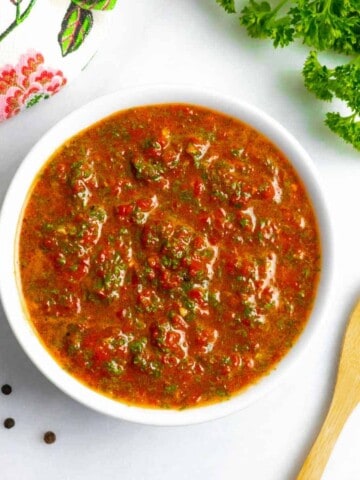
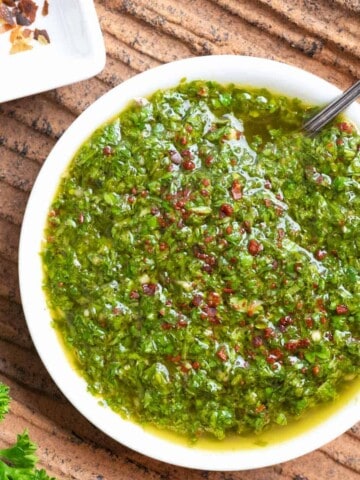
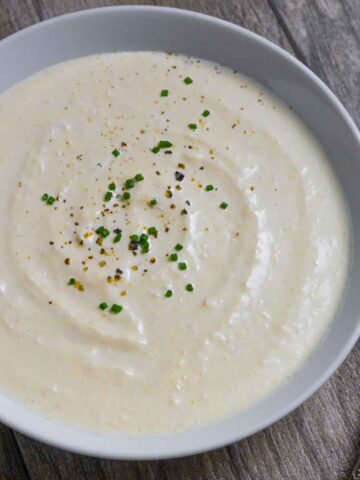

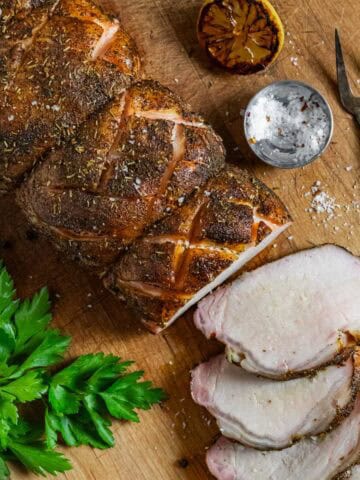
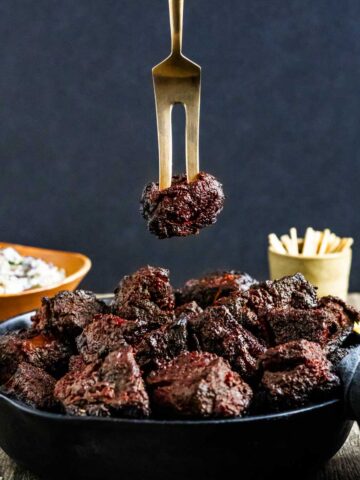
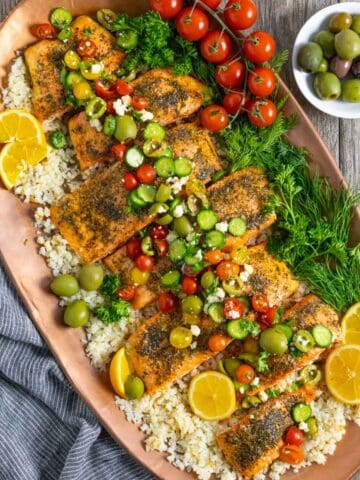
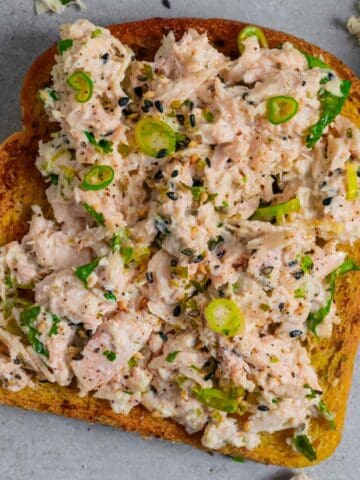
Comments
No Comments